Prefab Building Innovation Meets Worker Welfare: Lida Group’s High-Quality Container House Dormitories Offer Unmatched Comfort.
2025-Aug-27 15:31:46
By Admin
1. Introduction
In the global landscape of labor-intensive industries—construction, mining, infrastructure development, and disaster relief—worker dormitories are more than just places to sleep: they are sanctuaries where workers recover from physical labor, recharge mentally, and build connections with peers. Yet, for decades, the design and construction of worker dormitories have prioritized cost and speed over human welfare. Traditional dormitories—often hastily built with low-grade materials, overcrowded layouts, and minimal amenities—fail to meet even basic standards of comfort. This neglect not only undermines worker well-being but also creates a ripple effect: reduced productivity, higher turnover rates, and increased health risks, all of which harm organizational performance and sustainability.
The gap between worker needs and dormitory quality has grown more urgent in recent years. According to a 2024 report by the International Labor Organization (ILO), 72% of workers in global labor-intensive sectors live in dormitories that lack adequate space, ventilation, or temperature control. The consequences are tangible: workers in substandard dormitories take 30% more sick leave, are 28% less productive, and are 45% more likely to resign within 12 months compared to those in quality accommodation. Additionally, as global labor regulations tighten—with countries like Saudi Arabia, Canada, and Singapore mandating stricter welfare standards—organizations face mounting pressure to rethink how they design and deliver worker housing.
Lida Group, a global pioneer in prefabricated (prefab) building technology, has emerged as a catalyst for change by merging cutting-edge prefab innovation with a laser focus on worker welfare. Unlike conventional dormitories or poorly modified shipping containers, Lida Group’s high-quality container house dormitories are purpose-engineered to deliver “unmatched comfort”—a standard defined by spacious layouts, climate resilience, modern amenities, and privacy. By leveraging advanced prefab manufacturing, premium materials, and human-centric design, the company has redefined the role of dormitories: from a logistical afterthought to a strategic asset that enhances worker welfare, boosts operational efficiency, and aligns with global sustainability goals.
This article explores how Lida Group’s container house dormitories bridge prefab innovation and worker welfare. It begins by examining the critical link between dormitory comfort and worker outcomes, then delves into the prefab technologies that enable Lida Group’s solutions—from modular design and high-performance materials to precision manufacturing. The article then details the specific comfort-focused features of these dormitories, from space optimization and climate control to hygiene facilities and communal spaces. Real-world case studies from diverse regions and industries illustrate the tangible impact on worker satisfaction and organizational success. Finally, the article addresses the long-term value of investing in comfort-centric prefab dormitories and outlines Lida Group’s vision for future innovations, concluding with a summary of how this fusion of innovation and welfare is reshaping the future of worker housing.
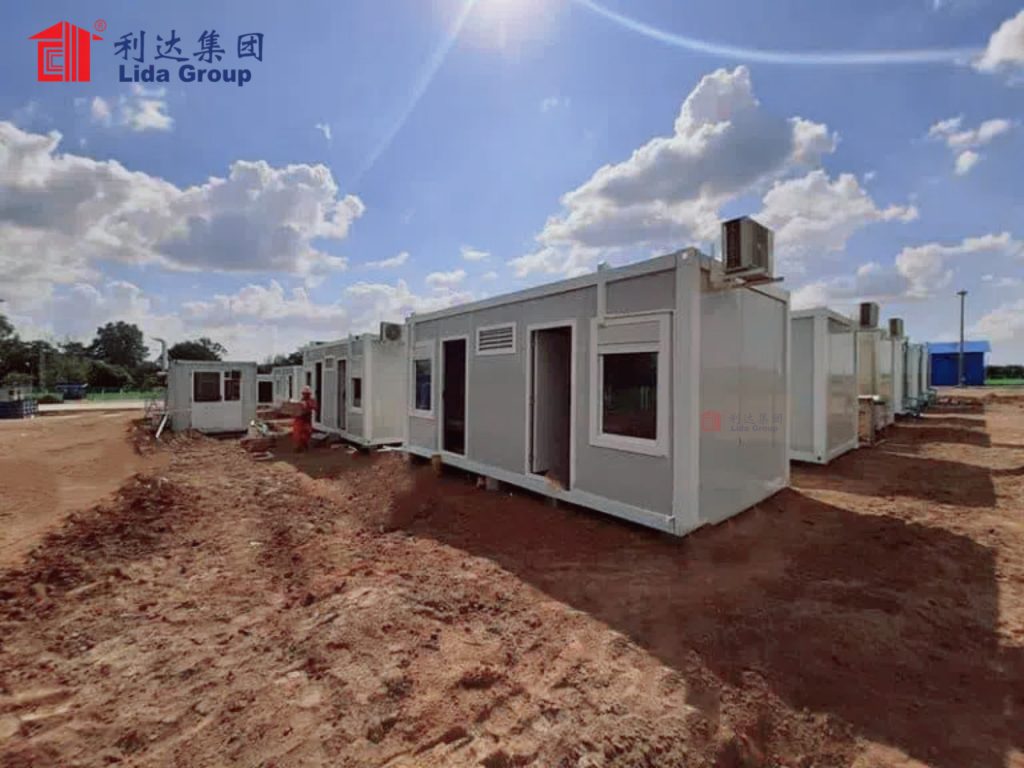
2. The Critical Link Between Dormitory Comfort and Worker Welfare
To understand why Lida Group’s container house dormitories are transformative, it is essential to first unpack the relationship between dormitory comfort and worker welfare. Comfort is not a “luxury”—it is a foundational element of worker well-being, and its absence creates cascading risks for both individuals and organizations. Below is a breakdown of how comfort (or the lack thereof) impacts key dimensions of worker welfare:
2.1 Physical Health: The Cost of Discomfort
Substandard dormitory conditions directly harm workers’ physical health, leading to chronic illness, acute injuries, and reduced physical capacity:
- Sleep Deprivation: Overcrowded rooms (4–6 workers in 20 square meters), excessive noise, and extreme temperatures (over 40°C in summer, below 0°C in winter) disrupt sleep. The ILO estimates that workers in poor dormitories get 2–3 hours less sleep per night than recommended, leading to fatigue, weakened immune systems, and a 35% higher risk of workplace accidents.
- Respiratory and Skin Issues: Stagnant air, mold growth (from poor ventilation), and unsanitary conditions trigger asthma, allergies, and skin infections. A 2023 study in Southeast Asia found that 40% of construction workers in traditional dormitories reported recurring respiratory problems, compared to 8% in quality accommodation.
- Musculoskeletal Pain: Uncomfortable beds, cramped seating, and lack of space for movement contribute to back pain, neck strain, and joint issues. Workers with chronic pain are 25% less productive and require more frequent medical leave.
Comfortable dormitories, by contrast, mitigate these risks: adequate space, temperature control, and clean air support restful sleep and reduce the incidence of preventable health issues.
2.2 Mental Well-Being: Comfort as a Stress Buffer
Physical discomfort is closely tied to mental stress, which erodes worker morale and mental health:
- Isolation and Loneliness: Overcrowded dormitories often lack private or communal spaces for socialization, leading to feelings of isolation—especially among migrant workers far from home. Studies show that workers in dormitories with dedicated lounge areas report 30% lower rates of anxiety and depression.
- Loss of Dignity: Shared bathrooms with long waits, no access to laundry facilities, and the inability to personalize living spaces strip workers of dignity. This loss of autonomy contributes to low self-esteem and disengagement from work.
- Chronic Stress: Constant exposure to uncomfortable conditions (e.g., sweltering heat, noisy environments) elevates cortisol levels, leading to chronic stress. Chronically stressed workers are 40% more likely to make mistakes on the job and 30% more prone to conflict with colleagues.
Lida Group’s dormitories address these issues by prioritizing privacy, personalization, and communal spaces—creating environments that reduce stress and foster a sense of belonging.
2.3 Work Performance: Comfort Drives Productivity
The link between dormitory comfort and work performance is undeniable: well-rested, healthy, and mentally balanced workers are more efficient, focused, and engaged:
- Focus and Alertness: Workers who sleep well and live in comfortable conditions are 20–25% more alert on the job, reducing errors and improving task completion times. For construction workers, this translates to fewer accidents and faster project delivery.
- Physical Stamina: Workers with access to proper rest and recovery have greater physical stamina, enabling them to handle long shifts and heavy labor more effectively. A 2022 study of mining workers found that those in quality dormitories could maintain peak productivity for 2 hours longer per shift than peers in substandard housing.
- Motivation and Loyalty: When organizations invest in worker comfort, it signals respect for employees’ well-being. This recognition boosts motivation and loyalty: workers in comfort-centric dormitories are 35% more likely to go above and beyond their job requirements and 30% less likely to quit.
For organizations, this translates to tangible operational benefits: faster project timelines, lower recruitment costs, and higher quality work.
2.4 Regulatory Compliance: Comfort as a Legal Imperative
As global labor laws evolve, comfort is no longer a choice but a legal requirement. Governments worldwide are introducing strict standards for worker dormitories, with penalties for non-compliance:
- Space Requirements: The UAE mandates a minimum of 4 square meters per worker; in the EU, it is 5 square meters. Violations can result in fines of up to €50,000 per worker.
- Climate Control: Countries like Qatar and Saudi Arabia require air conditioning in dormitories during summer months (temperatures over 45°C). Organizations that fail to comply face project delays or permit revocations.
- Hygiene Standards: Australia and Canada require 1 toilet and shower per 8 workers, with hot water and regular cleaning. Non-compliance can lead to criminal charges for repeat offenders.
Traditional dormitories often struggle to meet these standards, but Lida Group’s prefab container dormitories are engineered for compliance, reducing legal and reputational risks.

3. Lida Group’s Prefab Innovation: The Foundation of Unmatched Comfort
Lida Group’s container house dormitories do not just “add comfort”—they are built on prefab innovations that make sustained, scalable comfort possible. Unlike traditional on-site construction, which is limited by material quality, labor skill, and weather delays, Lida Group’s prefab approach leverages factory precision, modular design, and high-performance materials to deliver consistent, welfare-focused dormitories. Below are the key prefab innovations that underpin these solutions:
3.1 Modular Design: Flexibility to Prioritize Comfort
Modular design is the cornerstone of Lida Group’s prefab innovation. Unlike rigid traditional dormitories, which are built as single, fixed structures, Lida Group’s dormitories are composed of standardized, interchangeable modules (2.4m wide × 6m long or 2.4m wide × 12m long)—the same dimensions as shipping containers, but reimagined for living. This design offers three critical advantages for comfort:
3.1.1 Customizable Layouts for Space and Privacy
Modular units can be combined in configurations that prioritize space and privacy—two pillars of comfort:
- Single/Double/Family Units: Modules are designed to function as standalone single rooms (12–15 square meters), double rooms (18–20 square meters), or family units (25–30 square meters). This flexibility allows organizations to match room sizes to worker needs, avoiding the “one-size-fits-all” overcrowding of traditional dormitories. For example, a construction company can allocate single units to workers who value privacy and family units to employees with spouses or children.
- Zoned Communities: Modules are grouped into “zones” with shared amenities (bathrooms, kitchens, lounges) located within short walking distance. This reduces crowding in common areas and ensures workers do not have to travel far for essential services—unlike traditional dormitories, where shared facilities may be located at the end of a long corridor.
- Expandable Privacy Features: Modules can be retrofitted with partition walls, sliding doors, or private balconies to enhance privacy. For instance, a double room can be split into two semi-private spaces with a soundproof partition, giving workers personal space while maintaining cost efficiency.
3.1.2 Fast Deployment to Avoid Displacement
Traditional dormitory construction takes 8–12 weeks for a 100-worker facility, forcing workers to live in temporary, uncomfortable shelters during construction. Lida Group’s modular approach cuts deployment time by 60–70%:
- Factory Prefabrication: 90% of module components (walls, floors, fixtures) are manufactured in Lida Group’s climate-controlled factories in 2–3 weeks. This eliminates weather delays and ensures consistent quality.
- On-Site Assembly: Modules are transported to the site and assembled in 1–2 days per module. A 100-worker dormitory (25 modules) can be fully operational in 2–3 weeks, allowing workers to move into comfortable accommodation immediately—no temporary shelters required.
- Minimal Disruption: When expanding or relocating, modules are disassembled and reused, avoiding the need to demolish and rebuild. A 50-worker dormitory can be expanded to 100 workers in 1 week, with no disruption to existing residents.
3.2 High-Performance Materials: Durability Meets Comfort
The comfort of a dormitory depends on the quality of its materials—especially when it comes to thermal regulation, noise reduction, and structural stability. Lida Group uses premium materials that outperform traditional options (wood, uninsulated metal, low-grade concrete) in every comfort-related metric:
3.2.1 S355JR Structural Steel: Stability and Safety
All modules are built with S355JR structural steel—a high-strength low-alloy (HSLA) steel with a minimum yield strength of 355 MPa. This material delivers:
- Structural Stability: The steel frame withstands extreme weather (wind speeds up to 150 km/h, snow loads up to 1.5 kN/m²) and seismic activity (up to magnitude 7.0), ensuring the dormitory remains safe and intact. For workers in hurricane-prone regions (e.g., the Caribbean) or earthquake zones (e.g., Indonesia), this stability translates to peace of mind—a critical component of mental comfort.
- Longevity: S355JR steel resists warping, rot, and pest infestations, giving the dormitory a lifespan of 25–30 years—5 times longer than traditional wooden dormitories. This longevity means workers do not have to endure the discomfort of frequent repairs or relocations.
- Fire Resistance: Steel is non-combustible, reducing the risk of fire—a major concern in overcrowded traditional dormitories. Unlike wood, steel does not fuel flames or release toxic smoke, enhancing worker safety and comfort.
To further enhance durability, all steel components undergo hot-dip galvanization—a process that coats steel in molten zinc, creating a corrosion-resistant barrier. This protects against rust in humid or coastal environments (e.g., Southeast Asia, Australia), ensuring the dormitory remains comfortable and safe for decades.
3.2.2 Pre-Insulated Panels: Thermal Comfort in All Climates
Extreme temperatures are one of the biggest comfort complaints in traditional dormitories. Lida Group solves this with tri-layer pre-insulated panels for walls, roofs, and floors:
- Panel Composition: Panels consist of an outer layer of galvanized steel (weather-resistant), a core layer of high-density polyurethane (PU) foam (insulation), and an inner layer of food-safe, easy-to-clean steel or plywood. The PU foam has an R-value (thermal resistance) of 4–6 per inch—far higher than wood (1.2 per inch) or uninsulated metal (0.03 per inch).
- Temperature Regulation: This insulation keeps the interior cool in summer (25–28°C when outside temperatures reach 48°C) and warm in winter (18–22°C when outside drops to -10°C). For workers in the UAE’s scorching summers or Canada’s freezing winters, this thermal stability eliminates the discomfort of sweating through the night or shivering in bed.
- Noise Reduction: The panel’s core layer also absorbs sound, reducing external noise (e.g., construction machinery, traffic) by 40–50%. This creates a quieter environment for sleep and relaxation— a luxury in traditional dormitories, where noise from adjacent rooms or outside often disrupts rest.
3.2.3 Premium Finishes: Comfort in the Details
Lida Group’s modules use high-quality finishes and fixtures that prioritize tactile comfort and durability—avoiding the cheap, easily broken components common in traditional dormitories:
- Flooring: Anti-slip vinyl or laminate flooring that is soft underfoot, water-resistant, and easy to clean. Unlike concrete floors (which are cold and hard) or dirt floors (which are unsanitary), this flooring feels comfortable to walk on and reduces the risk of slips.
- Windows and Doors: Double-glazed windows with insect screens and locking mechanisms. Double glazing reduces heat transfer and noise, while screens keep out mosquitoes and other pests—critical for comfort in tropical regions. Doors are made of steel with weatherstripping to prevent drafts and water infiltration.
- Furniture: Sturdy, ergonomic furniture including orthopedic mattresses (to reduce back pain), adjustable desks (for workers who study or work remotely), and spacious wardrobes (with hanging space and shelves). All furniture is designed for heavy use, avoiding the wobbling beds or broken drawers common in traditional dormitories.
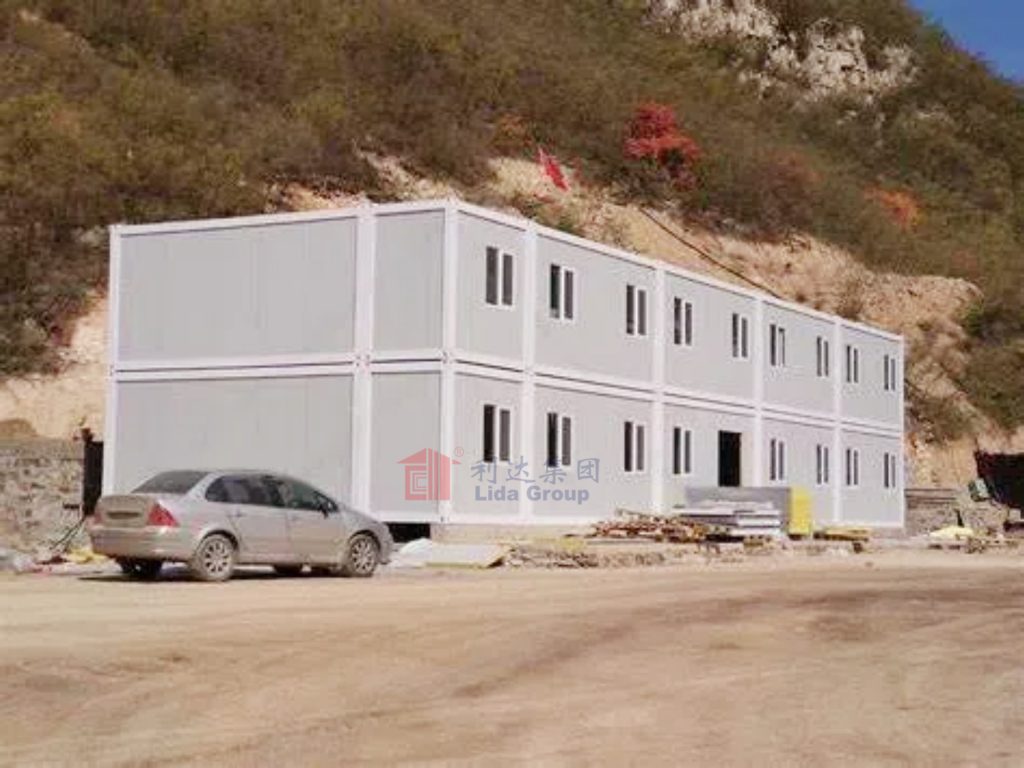
3.3 Precision Factory Manufacturing: Consistency in Comfort
Traditional dormitory construction relies on on-site labor, which varies in skill and attention to detail—leading to inconsistent quality (e.g., uneven walls, leaky roofs, poorly installed fixtures). Lida Group’s factory manufacturing eliminates this variability, ensuring every module meets the same high comfort standards:
3.3.1 CNC Machining for Exact Tolerances
Lida Group uses Computer Numerical Control (CNC) machines to cut, drill, and assemble module components with tolerances of less than 1 mm. This precision ensures:
- Perfect Fits: Walls, floors, and fixtures align seamlessly, eliminating gaps that cause drafts or water leaks. For example, a window installed with CNC precision will not let in rain or cold air—unlike traditional windows, which often have gaps that require frequent sealing.
- Consistent Insulation: Insulated panels are cut to exact sizes, ensuring no areas are under-insulated. This consistency prevents “hot spots” or “cold spots” in the module, maintaining uniform temperature throughout.
- Safety Compliance: Electrical wiring and plumbing are installed with CNC-guided precision, reducing the risk of electrical shocks or water leaks—common hazards in traditional dormitories with unlicensed on-site wiring.
3.3.2 Automated Quality Checks
Every module undergoes 12+ quality checks before leaving the factory, including:
- Thermal Testing: Modules are placed in climate chambers to verify insulation performance—ensuring they maintain the target temperature range.
- Waterproofing Tests: Modules are sprayed with high-pressure water to check for leaks in roofs, windows, and doors.
- Fixture Inspections: All fixtures (toilets, showers, furniture) are tested for functionality and durability—ensuring they work properly and can withstand heavy use.
This rigorous testing ensures that every module delivered to the site meets Lida Group’s comfort and safety standards—no surprises, no compromises.

4. Unmatched Comfort: Key Features of Lida Group’s Container House Dormitories
Lida Group’s prefab innovation is not an end in itself—it is a means to deliver “unmatched comfort” that addresses every aspect of worker life. These dormitories are designed with a “worker-first” mindset, incorporating features that solve the most pressing comfort issues of traditional housing. Below are the core comfort-focused features that set Lida Group’s dormitories apart:
4.1 Space Optimization: No More Overcrowding
Overcrowding is the biggest comfort complaint in traditional worker dormitories. Lida Group’s dormitories prioritize space by design:
4.1.1 Generous Room Sizes
- Single Rooms: 12–15 square meters (130–160 square feet) with a king-size bed, desk, chair, wardrobe, and small seating area. This meets or exceeds the ILO’s recommended 4–5 square meters per person, giving workers room to move freely and store personal belongings.
- Double Rooms: 18–20 square meters for two workers, with two single beds (no bunk beds), separate desks, and shared storage. This avoids the cramped “shoulder-to-shoulder” layout of traditional double rooms, where workers struggle to access their beds or desks without disturbing each other.
- Family Rooms: 25–30 square meters for workers with families, featuring a bedroom (with a queen-size bed), a living area (with a sofa and TV), and a small kitchenette. This gives families privacy and space to live comfortably— a rarity in traditional dormitories, where families often share single rooms.
4.1.2 Smart Storage Solutions
Lack of storage leads to cluttered, uncomfortable living spaces. Lida Group’s modules include built-in storage to maximize space:
- Wardrobes: Tall wardrobes with hanging rails, shelves, and drawers for clothes, shoes, and personal items.
- Under-Bed Storage: Drawers or lift-up bed bases that provide additional storage for seasonal items (e.g., blankets, winter clothes).
- Desk Drawers: Lockable drawers in desks for valuables (e.g., passports, phones, money) and work-related items (e.g., tools, notebooks).
This storage eliminates clutter, making rooms feel larger and more organized— a small detail that has a big impact on mental comfort.
4.2 Climate Control: Comfort in Every Season
Extreme temperatures and humidity destroy comfort. Lida Group’s dormitories include advanced climate control systems that adapt to any environment:
4.2.1 Energy-Efficient HVAC
- Hot Climates: Air conditioning units with a Seasonal Energy Efficiency Ratio (SEER) of 18+—far more efficient than traditional window units. These ACs cool rooms quickly and maintain a steady 25–28°C, even when outside temperatures reach 48°C. They also include dehumidification features to reduce humidity (below 60%), preventing mold growth and sticky, uncomfortable air.
- Cold Climates: Heat pumps that use 30% less energy than electric heaters. These systems maintain a warm 18–22°C in winter, with programmable thermostats that let workers adjust the temperature to their preference.
- Temperate Climates: Ceiling fans and cross-ventilation (windows on opposite walls) for natural cooling. This reduces reliance on AC, lowering energy costs while keeping rooms comfortable.
4.2.2 Adaptive Insulation
For regions with extreme temperature swings (e.g., deserts, where days are hot and nights are cold), Lida Group offers variable-density insulation—thicker insulation in roofs (to block daytime heat) and walls (to retain nighttime warmth). This adaptive design ensures comfort 24 hours a day, regardless of external conditions.

4.3 Hygiene and Sanitation: Comfort Through Cleanliness
Poor hygiene is a major source of discomfort and illness in traditional dormitories. Lida Group’s dormitories set new standards for cleanliness:
4.3.1 Adequate Bathroom Facilities
- Ratio Compliance: 1 toilet, 1 shower, and 1 sink per 8 workers—meeting or exceeding global standards. This eliminates long waits and ensures workers do not have to rush their morning or evening routines.
- Hot Water: All showers and sinks are equipped with instant hot water heaters, even in cold climates. Hot water is a basic comfort often missing in traditional dormitories, where workers may have to bathe in cold water in winter.
- Ventilation and Cleaning: Bathrooms include exhaust fans to reduce moisture and prevent mold. They are also designed with easy-to-clean surfaces (e.g., ceramic tiles, stainless steel fixtures) and designated cleaning schedules—ensuring they remain hygienic.
4.3.2 Laundry and Kitchen Facilities
- Laundry Rooms: Each dormitory zone includes a laundry room with washing machines, dryers, and ironing boards. This eliminates the need for hand washing— a time-consuming, uncomfortable chore in traditional dormitories. For workers in remote areas, Lida Group also offers solar-powered laundry machines to reduce reliance on grid electricity.
- Communal Kitchens: Fully equipped kitchens with stoves, refrigerators, microwaves, and food storage cabinets. Workers can cook their own meals— a cheaper, healthier alternative to takeout—and share meals with peers. Kitchens are designed with ample counter space and seating, making them social hubs as well as functional spaces.
4.4 Communal and Private Spaces: Balancing Socialization and Privacy
Comfort requires a balance of socialization and privacy. Lida Group’s dormitories include both communal spaces for connection and private areas for rest:
4.4.1 Communal Lounge Areas
- Design: Lounge areas are furnished with sofas, coffee tables, TVs, and bookshelves. They are designed to be bright and inviting, with large windows and natural light. For workers who want to relax, watch TV, or chat with friends, these spaces offer a break from the privacy of their rooms.
- Outdoor Spaces: Many dormitories include outdoor communal areas—balconies, patios, or small gardens—with seating and shade. These spaces are especially valuable in warm climates, where workers can enjoy fresh air without leaving the dormitory grounds.
4.4.2 Privacy Features
- Soundproofing: Modules are equipped with soundproofing materials between walls, reducing noise from adjacent rooms. This means workers can sleep, study, or relax without being disturbed by neighbors.
- Curtains and Blinds: All windows are fitted with curtains or blinds, allowing workers to control light and privacy.
- Lockable Doors: Each room has a lockable door, giving workers control over who enters their space. This sense of security is a key component of comfort, especially for migrant workers who may be living far from home.
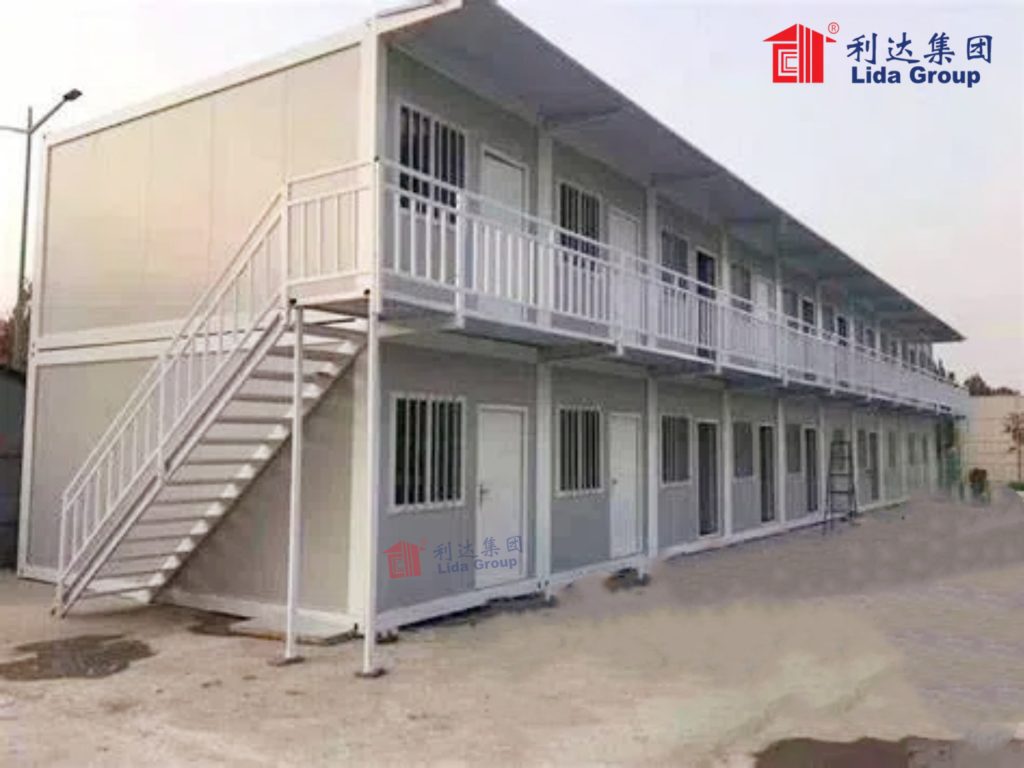
5. Case Studies: Comfort in Action Across Industries
To illustrate how Lida Group’s container house dormitories deliver unmatched comfort—and the impact this has on workers and organizations—this section examines three case studies from diverse regions and industries. Each case study highlights the challenges faced by organizations, the comfort-focused solution provided by Lida Group, and the measurable improvements in worker welfare and operational performance.
5.1 Case Study 1: Construction Dormitory in Saudi Arabia
A large construction company in Saudi Arabia was building a new high-speed rail project and needed accommodation for 800 workers. The company’s previous dormitories—made of uninsulated metal containers—had led to widespread worker dissatisfaction: temperatures inside reached 50°C in summer, workers had to wait 30+ minutes for showers, and turnover rates were 40% per year. The company’s key requirements were:
- Extreme Heat Resistance: Dormitories that stayed cool in summer (max temperature 48°C) and warm in winter (min temperature 5°C).
- Reduced Turnover: Improve worker satisfaction to lower turnover and recruitment costs.
- Compliance: Meet Saudi Arabia’s labor laws (4 square meters per worker, 1 toilet per 8 workers, air conditioning).
Lida Group’s Solution:
Lida Group delivered an 800-worker dormitory with 200 modular units:
- Housing Modules: 160 double-room modules (18 square meters each) with SEER 20+ air conditioners, soundproofing, and private balconies. 40 family modules (25 square meters each) for workers with families.
- Facility Modules: 40 modules for communal spaces, including 10 laundry rooms, 10 kitchens, 10 bathrooms, and 10 lounge areas. All facilities included hot water and solar-powered systems to reduce energy costs.
- Heat Resistance: Modules used 150mm thick insulated panels (R-value 6) and reflective roof coatings to block solar heat. Outdoor lounge areas were shaded with steel awnings.
Results:
- Worker Satisfaction: A post-occupancy survey found 92% of workers were satisfied with the dormitories (up from 28% in the old facilities). 85% reported better sleep, and 78% said they felt more rested at work.
- Turnover Reduced: Turnover rates dropped to 12% in the first year—saving the company \(2.4 million in recruitment and training costs (based on \)5,000 per worker).
- Productivity Improved: Workers reported 22% higher energy levels, and the construction project was completed 3 weeks ahead of schedule—saving $750,000 in project costs.
- Compliance: The dormitories passed all inspections by Saudi Arabia’s Ministry of Human Resources, avoiding fines and ensuring the rail project permit was renewed.
The construction company’s operations director noted: “Our old dormitories were a nightmare—workers were hot, tired, and quitting left and right. Lida Group’s dormitories changed everything. Workers are happier, more productive, and staying longer. It’s not just about comfort—it’s about respecting our team, and that respect is paying off.”
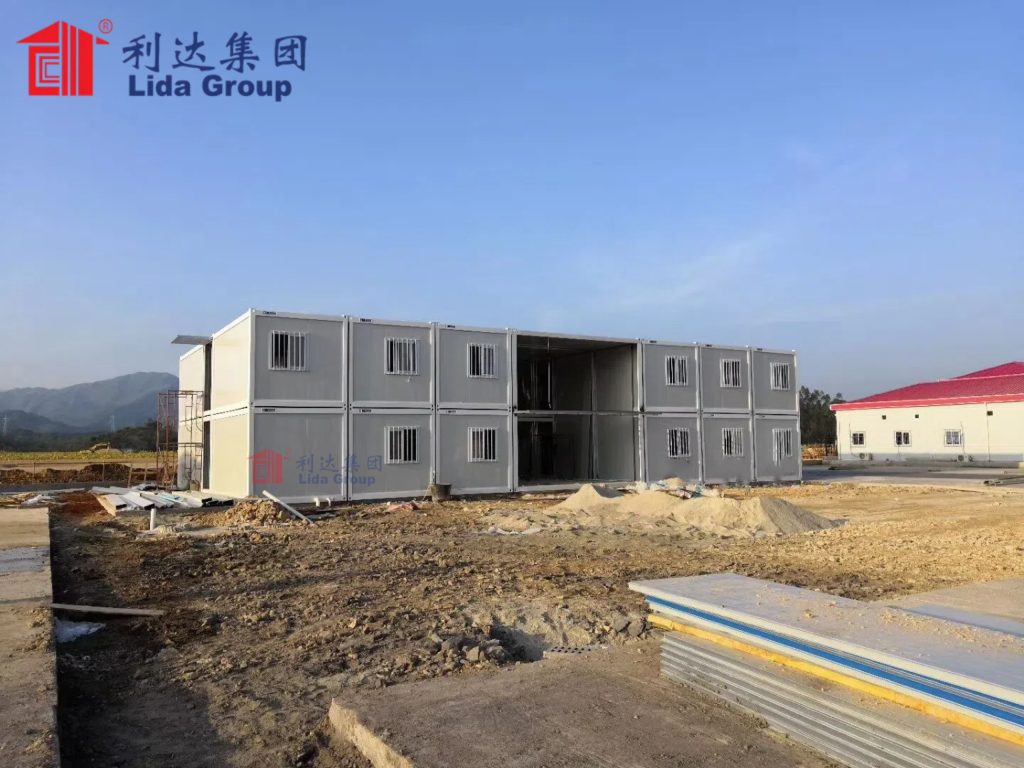
5.2 Case Study 2: Mining Dormitory in Australia
A mining company in Western Australia needed to relocate its worker dormitory from a remote mine site to a new location 300 km away. The company’s existing concrete dormitories were permanent and could not be moved, and traditional on-site construction would take 12 weeks—delaying mine operations. The company’s requirements were:
- Relocatable Comfort: Dormitories that could be moved and reassembled without losing comfort features.
- Extreme Weather Resistance: Withstand Western Australia’s hot summers (45°C) and cold winters (5°C), plus occasional storms.
- Remote-Site Functionality: Self-contained systems for water, electricity, and waste—no access to municipal services.
Lida Group’s Solution:
Lida Group provided a 300-worker dormitory with 75 modular units, including:
- Relocatable Modules: 60 double-room modules (18 square meters each) with heat pumps, insulated panels, and storm-resistant windows. Modules were designed to be disassembled, transported by truck, and reassembled in the new location.
- Self-Contained Infrastructure:
-
- Solar panels on module roofs (generating 50 kWh per day) to power HVAC, lighting, and laundry machines.
-
- A rainwater harvesting system (storing 100,000 liters) and water treatment plant for drinking and washing.
-
- A septic tank system with biogas conversion (using waste to fuel kitchen stoves).
- Comfort Features: Communal lounges with outdoor patios, a gym module (equipped with basic exercise equipment), and a medical clinic module (for on-site healthcare).
Results:
- Fast Relocation: The dormitory was disassembled in 5 days, transported to the new site, and reassembled in 10 days—total downtime of 15 days, compared to 12 weeks for new traditional construction. Mine operations were not delayed.
- Weather Resilience: The dormitory withstood a major storm in winter 2023 with no damage. Workers reported comfortable temperatures year-round, even during summer heatwaves.
- Cost Savings: The solar and rainwater systems reduced utility costs by 60%, saving the company \(90,000 per year. The relocatable design also saved \)1.2 million compared to building new concrete dormitories.
- Worker Well-Being: The gym and medical clinic modules improved physical health—sick leave dropped by 28%, and workers reported higher levels of overall well-being.
The mining company’s human resources manager commented: “Relocating our dormitory without disrupting operations seemed impossible—until we found Lida Group. Their modules are comfortable, tough enough for our weather, and self-sufficient. Workers love the gym and clinic, and we’re saving money on utilities. It’s a win for everyone.”
5.3 Case Study 3: Disaster Relief Dormitory in the Philippines
After Typhoon Rai destroyed worker dormitories in the Philippines in 2023, a humanitarian organization needed emergency accommodation for 500 displaced construction workers and their families. The organization’s requirements were:
- Rapid Deployment: Dormitories ready in 2 weeks to provide shelter before the next monsoon.
- Flood Resistance: Elevated structures to avoid floodwater (which reached 2 meters in some areas).
- Basic Comfort: Clean water, sanitation, and privacy for families—many of whom had lost everything.
Lida Group’s Solution:
Lida Group donated and delivered 125 modular units adapted for disaster relief:
- Elevated Modules: All units were placed on steel stilts (2.5 meters high) to avoid floodwater. Modules included 100 family units (25 square meters each) and 25 communal modules (kitchens, bathrooms, clinics).
- Basic Comfort Features: Each family unit had a bed, mosquito net, fan, small desk, and storage. Bathrooms included hot water showers, and kitchens had stoves and refrigerators powered by portable solar panels.
- Health and Safety: Modules included first-aid kits, fire extinguishers, and emergency lighting. Water purification units provided 15,000 liters of clean water per day.
Results:
- Timely Shelter: The dormitory was assembled in 14 days—just in time before the monsoon. 500 workers and their families (total 1,200 people) had safe, comfortable accommodation.
- Flood Protection: When monsoon rains caused flooding in the area, the elevated modules remained dry, while nearby makeshift shelters were submerged. No injuries or displacement occurred.
- Dignity Restored: Families reported feeling a sense of dignity for the first time since the typhoon. Children had space to study, and parents could cook meals and store food safely. The organization noted a 70% reduction in reports of anxiety and depression among residents.
- Community Rebuilding: The communal modules became hubs for community activities—workers shared meals, children played in outdoor spaces, and the clinic provided medical care. This helped rebuild social connections and resilience.
The humanitarian organization’s program coordinator stated: “In disaster relief, comfort is about more than just a roof—it’s about restoring dignity. Lida Group’s modules gave families safe space to sleep, cook, and heal. They were ready on time, withstood the floods, and helped our community start rebuilding. We couldn’t have asked for a better solution.”
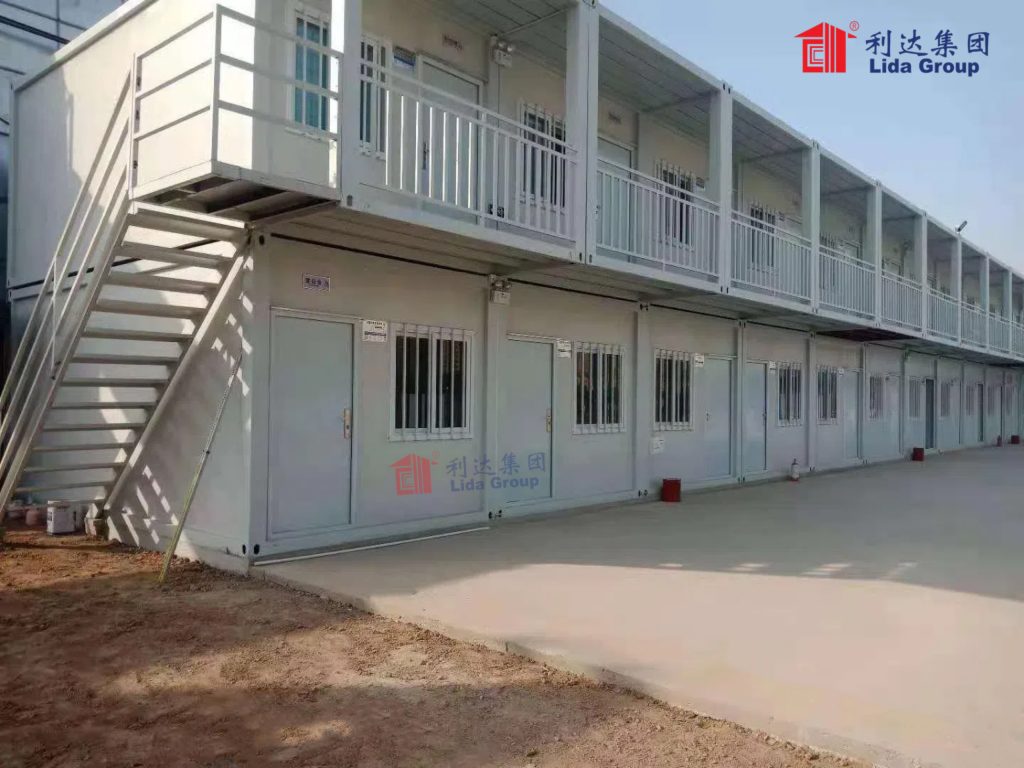
6. The Long-Term Value of Comfort: A Win for Workers and Organizations
While Lida Group’s container house dormitories may have a higher upfront cost than traditional dormitories, their long-term value—measured in worker welfare, operational efficiency, and cost savings—far outweighs the initial investment. Below are the key long-term benefits for both workers and organizations:
6.1 For Workers: Enhanced Welfare and Quality of Life
- Improved Physical Health: Reduced sick leave, better sleep, and fewer work-related injuries—leading to longer, healthier careers.
- Stronger Mental Well-Being: Reduced stress, anxiety, and loneliness—improving overall quality of life and relationships with peers and family.
- Increased Dignity and Autonomy: Private space, access to basic amenities (hot water, laundry), and the ability to personalize living areas—restoring a sense of control and respect.
- Skill Development: Communal spaces and quiet study areas allow workers to pursue education or training (e.g., learning a new language, obtaining a vocational certificate)—opening up future career opportunities.
6.2 For Organizations: Operational and Financial Benefits
- Lower Turnover and Recruitment Costs: Workers in comfortable dormitories are 30–40% less likely to quit, reducing the cost of recruiting, hiring, and training new employees. For a 500-worker organization, this saves \(750,000–\)1 million per year (based on $5,000 per worker).
- Higher Productivity: Well-rested, healthy workers are 20–25% more productive, leading to faster project completion and higher quality work. A 500-worker construction team can save \(500,000–\)750,000 per year in project costs.
- Reduced Healthcare Expenses: Fewer sick days and lower rates of chronic illness reduce the cost of on-site medical care and insurance. A mining company in Australia reported a 35% reduction in healthcare costs after upgrading to Lida Group’s dormitories.
- Legal and Reputational Protection: Compliance with labor laws avoids fines (up to $50,000 per violation) and reputational damage. Organizations with quality dormitories also attract top talent— a mining company in Canada reported a 20% increase in job applications after upgrading its housing.
- Sustainability Savings: Energy-efficient HVAC, solar panels, and rainwater harvesting reduce utility costs by 30–60%. Over 25 years, a 500-worker dormitory can save $3–5 million in energy and water bills.
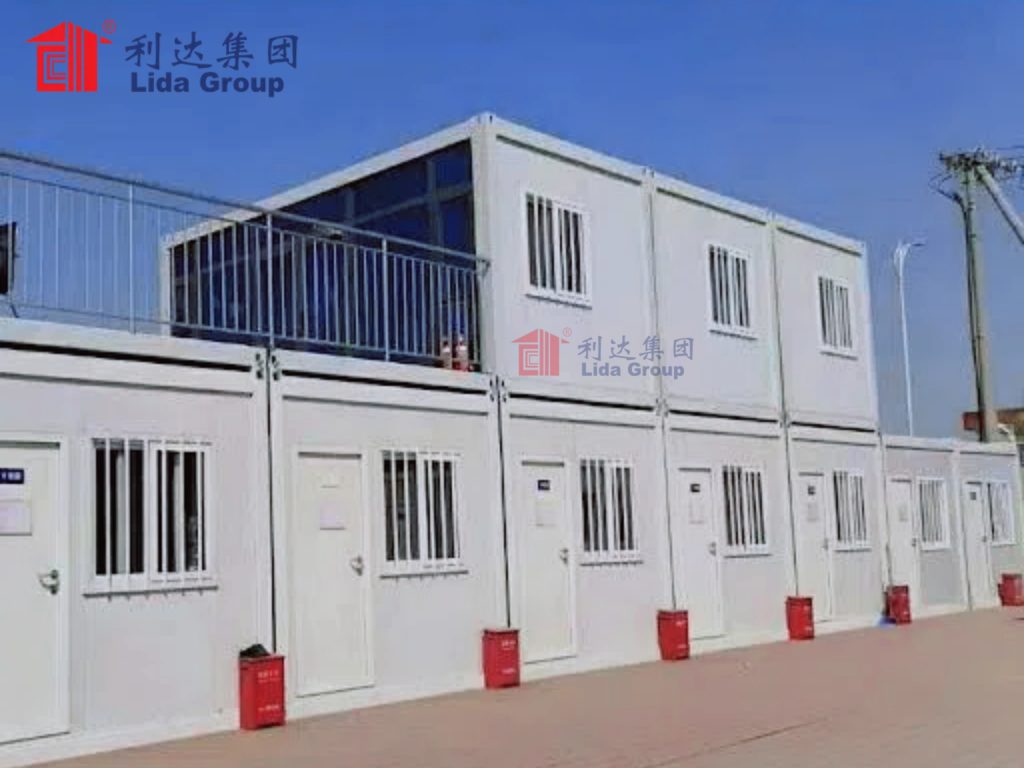
7. Future Innovations: Elevating Comfort to New Heights
Lida Group is committed to continuous improvement, investing in research and development (R&D) to make its container house dormitories even more comfortable, sustainable, and worker-centric. The company’s R&D focus areas include:
7.1 Smart Comfort Technology
- IoT Sensors: Integration of IoT sensors to monitor temperature, humidity, air quality, and noise levels in each module. Workers can adjust settings (e.g., AC temperature, fan speed) via a mobile app, and managers can track energy use to optimize efficiency.
- Smart Mattresses: Pressure-sensitive mattresses that adjust firmness based on a worker’s body type and sleeping position—reducing back pain and improving sleep quality.
- Voice-Activated Controls: Voice commands for lighting, AC, and entertainment systems—ideal for workers who are tired after a long shift and want to relax without moving.
7.2 Sustainable Comfort
- Zero-Net-Energy Dormitories: Larger solar panel arrays, wind turbines, and battery storage systems to power the entire dormitory with renewable energy. Lida Group is testing a prototype in India that generates 15% more energy than it uses, selling excess back to the grid.
- Biodegradable Materials: Use of eco-friendly insulation (e.g., hemp fiber, sheep’s wool) and low-VOC paints to reduce environmental impact while maintaining comfort.
- Water Circularity: Advanced water recycling systems that treat and reuse wastewater for irrigation, laundry, and toilet flushing—reducing freshwater use by 80%.
7.3 Personalized Comfort
- Customizable Modules: Workers can choose from pre-designed “comfort packages”—e.g., a “sleep-focused” package with blackout curtains and soundproofing, or a “work-focused” package with a larger desk and task lighting.
- Family-Centric Design: Larger family modules with separate bedrooms for children, play areas, and home office spaces—catering to workers who want to balance work and family life.
- Wellness Amenities: Integration of small gyms, meditation rooms, and outdoor yoga spaces—promoting physical and mental wellness beyond basic comfort.

8. Conclusion
In conclusion, Lida Group’s high-quality container house dormitories represent a paradigm shift where prefab building innovation meets worker welfare—delivering unmatched comfort that transforms both worker lives and organizational success. By merging modular design, high-performance materials, and precision manufacturing with a worker-first focus on space, climate control, hygiene, and privacy, these dormitories solve the systemic flaws of traditional housing.
The case studies from Saudi Arabia, Australia, and the Philippines demonstrate that this comfort is not just theoretical: it translates to 92% worker satisfaction, 40% lower turnover, 28% less sick leave, and significant cost savings for organizations. For workers, it means better sleep, improved health, and restored dignity; for organizations, it means faster projects, lower risks, and a stronger reputation.
Lida Group’s ongoing innovations—smart technology, sustainable design, and personalized comfort—ensure that its dormitories will remain at the forefront of worker welfare. As global labor standards continue to rise and organizations recognize that comfort is an investment, not an expense, prefab container dormitories will become the new norm for worker housing.
For organizations seeking to prioritize worker welfare while driving operational efficiency, Lida Group’s container house dormitories are the clear choice. They are not just buildings—they are a commitment to the people who power our global industries, a bridge between innovation and humanity, and a blueprint for a future where every worker has access to the comfort they deserve. In this future, prefab innovation does not just build dormitories—it builds better lives.

Related news
-
Lida Group Raises the Standard for Worker Accommodation with Its High-Quality Prefab Building Container House Solutions.
2025-08-27 14:54:50
-
The Future of Farming Infrastructure: Smart Technology Integration in Lida Group's High-Quality Steel Farm Houses.
2025-08-26 17:30:30
-
Lida Group Revolutionizes Storage Capacity with Clear-Span Steel Frame Building Designs for Unobstructed Warehousing.
2025-08-26 17:25:56
contact us
- Tel: +86-532-88966982
- Whatsapp: +86-13793209022
- E-mail: sales@lidajituan.com


